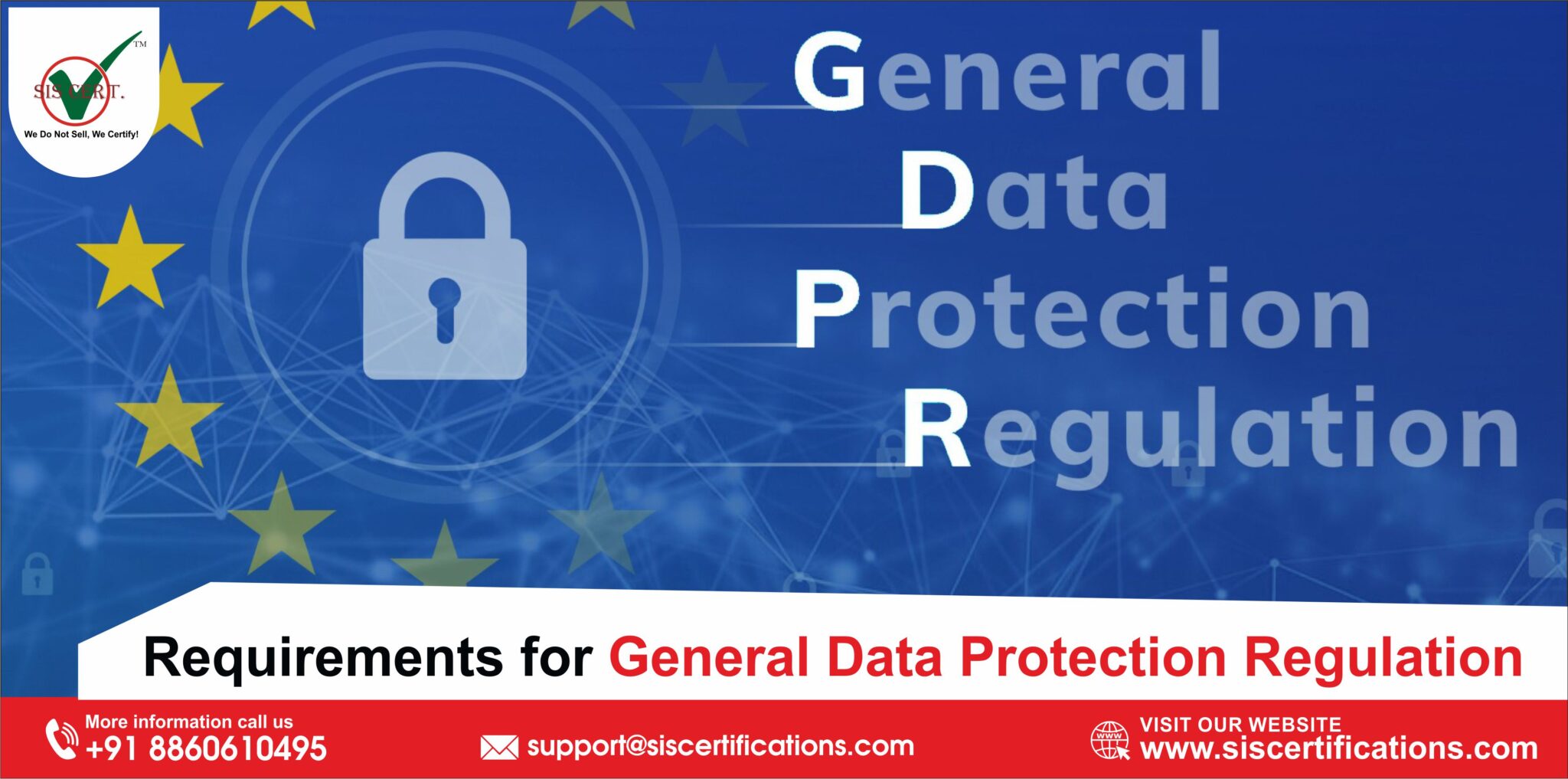Big companies collect and store consumer data to meet their needs and requirements. With the internet becoming the online business hub, it has given rise to many global problems in which the data is collected, stored and transferred today. Consumers expect more transparency and responsiveness from the organizations and blame the company for their lost data in the event of a data breach, not the hacker.
The International Organization for Standardization has developed ISO 27001 certification, ISO 27701 certification, Capability Maturity Model Integration (CMMI) and ISO 27002 certification to ensure information security. The European Union replaced its Data Protection Directive from 1995 and adopted the General Data Protection Regulation (GDPR) to protect the personal data and privacy of European Union citizens.
What is General Data Protection Regulation (GDPR)?
The European Union adopted the General Data Protection Regulation (GDPR) in April 2016, and it came into effect on May 2018 replacing the outdated data protection directive from 1995. Any organization associated with processing personal data can apply for GDPR linked to European citizens, regardless of its geographical location.
The General Data Protection Regulation (GDPR) is the core digital privacy legislation of the European Union. It helps organizations streamline and enhance several core business activities. The GDPR considers information security as an integral part of data protection and occasionally follows a risk-based approach to address risks related to data subjects’ rights and freedom. Data protection is one of the basic requirements of the General Data Protection Regulation to ensure data protection.
It does not only apply to digitized data processing but also to the organizations that are into processing and storing personal data on physical supports. The General Data Protection Regulation (GDPR) with ISO 27701 standard focuses on establishing a Privacy Information Management System (PIMS) and safeguards user’s rights and freedom. ISO 27701 Certification is an extension to ISO 27001 certification and ISO 27002 certification.
GDPR Requirements Checklist⮯
The GDPR (GDPR) outlines responsibilities for organizations to ensure privacy and information security. It is a set of rules and regulations that guides organizations on how to process the personal data of data subjects. The GDPR not only secures information security but also safeguards the rights and freedom of individuals. The GDPR requirements checklist is as follows:
○ Lawful, fair and transparent processing
○ Limitation of purpose, data and storage
○ Data subject’s rights
○ Consent
○ Personal data breaches
○ Privacy by design
○ Data protection impact assessment
○ Data transfers
○ Data protection officer
○ Awareness and training
Step-by-Step Guide for General Data Protection Regulation (GDPR) Requirements ⮯
- Lawful, fair and transparent processing – To ensure GDPR compliance an organization must follow six lawful reasons for the processing of data. These are:
- Consent
- Contract
- Legal Obligation
- Vital Interest
- Public Task
- Legitimate Interests
It requires an organization to process data in a lawful, fair and transparent manner. A GDPR sets out rules and regulations for organizations and provides a GDPR requirements checklist to identify the legal basis for processing personal data.
- Limitation of purpose, data and storage – Companies must collect the required data and should not keep data once the processing purpose is completed. Data collection should be done only for specific, explicit and legitimate purposes. It provides transparency and protects the personal information of users. An organization must follow these GDPR requirements:
- Personal data should not be processed for any purpose other than legitimate purposes.
- The organization must collect only the necessary data.
- Deleting the data collected once the legitimate purpose was fulfilled.
- Data subjects rights – The General Data Protection Regulation (GDPR) enshrined eight data subject rights. These are:
- Right to be informed
- Right of access
- Right to rectification
- Right to erasure
- Right to restrict processing
- Right to data portability
- Right to object
- Rights related to automated decision making including profiling
- Consent – An organization must provide consent information in explicit, clear and plain language. Organizations require the consent of parents/guardians if the child’s age is under 16. The consent must be collected and documented, and a data subject is allowed to withdraw consent at any moment.
- Personal data breaches – Article 4 of the GDPR defines personal data breaches as an incident leading to accidental or lawful destruction, loss, or access to personal data. The GDPR compliance mandates an organization to maintain a personal data breach register and inform the regulator or data subject within 72 hours of identifying the breach.
- Privacy by design – It requires an organization to implement the best practices to ensure information security and privacy. It incorporates organizational and technical mechanisms to protect personal data by designing new processes and systems.
- Data Protection Impact Assessment (DPIA) – A Data Protection Impact Assessment (DPIA) identifies and minimizes privacy risks. An organization must conduct a DPIA when a significant change is introduced in the processing of personal data, including new processes, change to an existing process, or new project.
- Data transfers – The personal data controller is responsible for ensuring that the personal data of the users is protected and that GDPR requirements are fulfilled. The controllers must ensure data protection and privacy even if the data processing is done by a third party.
- Data protection officer – A Data Protection officer (DPO) is an independent body that advises and monitors an organization on how to comply with GDPR regulatory requirements.
Awareness and training – Organizations must provide training to employees related to EU GDPR requirements. A staff awareness training program is mandatory as it enables organizations to adopt responsible data protection practices.
Conclusion ✅
The General Data Protection Regulation (GDPR) outlines the requirements for an organization to ensure information security. It provides a set of rules and regulations for organizations that are related to data collecting and processing. It requires an organization to conduct an incident management plan and identify risks related to data processing. The gdpr certification cost varies from organization to organization depending on its size, number of employees, number of branches and the certification body selected by the organization.




